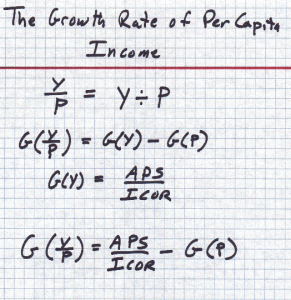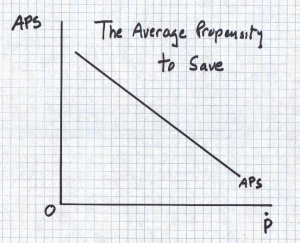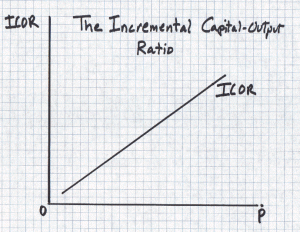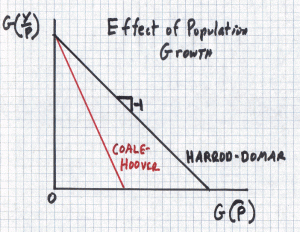Relation to Harrod-Domar Model

Relation to the Harrod-Domar Model
The Coal;e- Hoover modelwas developed by Ainsey Coale and Edgar Hoover to explain the effect of rapid population growth in low-income countries like India. In both the Harrod-Daomar model and the Coale-Hoover Model, the growth rate of GDP per capita is equal to the APS/ICOR minus G(P), the growth rate of population. If the population growth rate were constant, there would be no difference between the two models.
Effect of Population Growth on Savings Rate

Effect of Population Growth on the Savings Rate
Coale and Hoover assumed that as people had more children, they would have to spend a larger fraction of their income on consumption and would have a smaller fraction left for savings. Thus as the population growth rate G(P) rose, the average propensity to save (APS) would fall. This would reduce the growth rate of GDP, G(Y).
Effect of Population Growth on ICOR

Effect of Population Growth on the ICOR
Coale and Hoover assumed that as people had more children, the society would have to spend a larger fraction of its investment resources on new housing, new schools and new medical facilities. They beleived that the productivity of these investments would be lower than the productivity of investment in factories, machines, roads and bridges. Thus the ICOR (a measure of inefficiency) would rise as the population growth rate G(P), increased. This would reduce the growth rate of GDP, G(Y).
Effect of Population Growth on GDP/Capita

Effect of Population Growth on GDP Per Capita
In the Harrod-Domar model, population growth affects only the denominator of the per-capita income ratio. In the Coale -Hoover variant of that model, population growth reduces the numerator as well. It lowers the growth rate of GDP by reducing the average propensity to save (APS) and by increasing the incremental capital output ratio (ICOR). Thus, in the Coale-hoover model, a 1% increase in the growth rate of population G(P) will reduce the growth rate of per capita income G(Y/P) by more than 1%.
